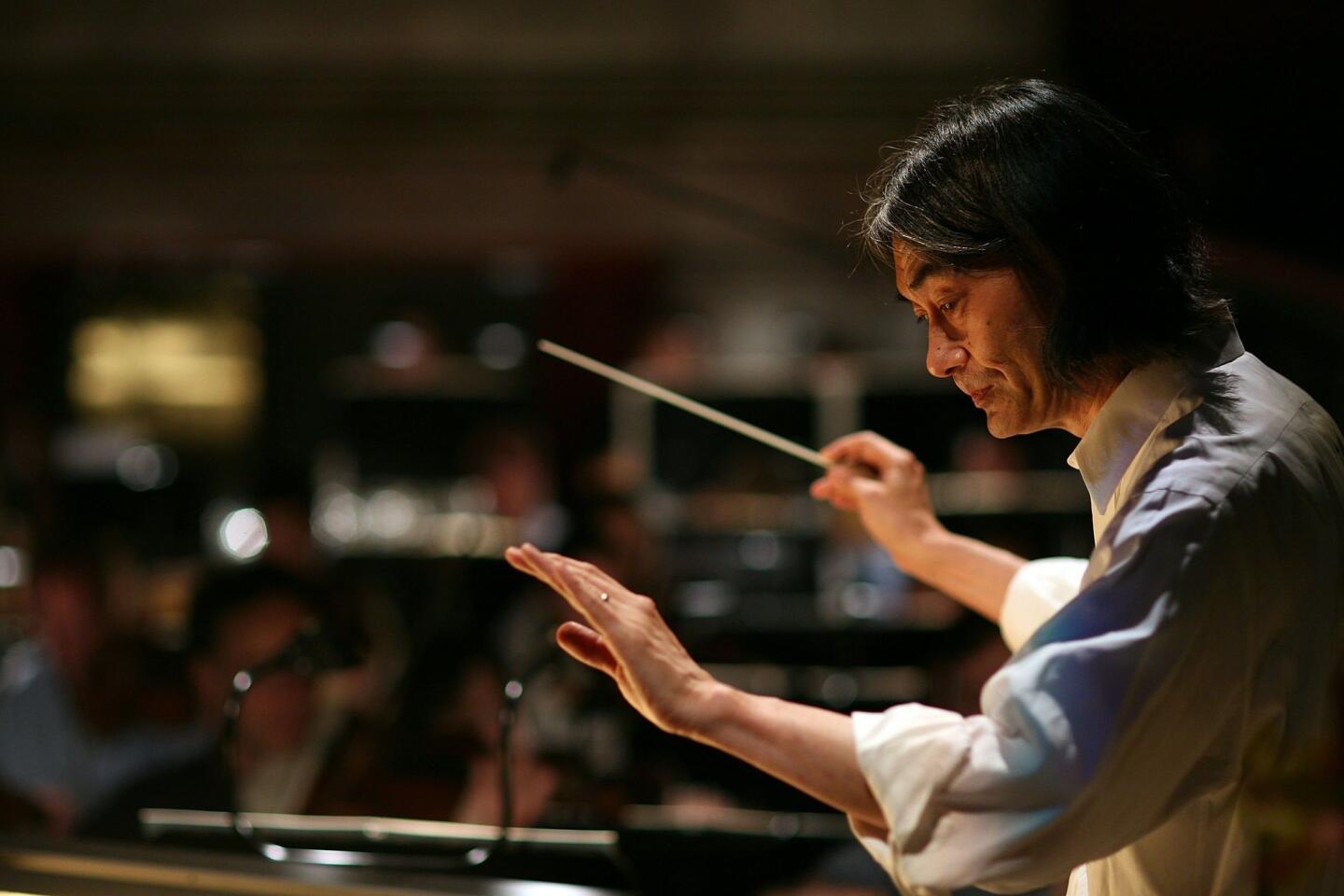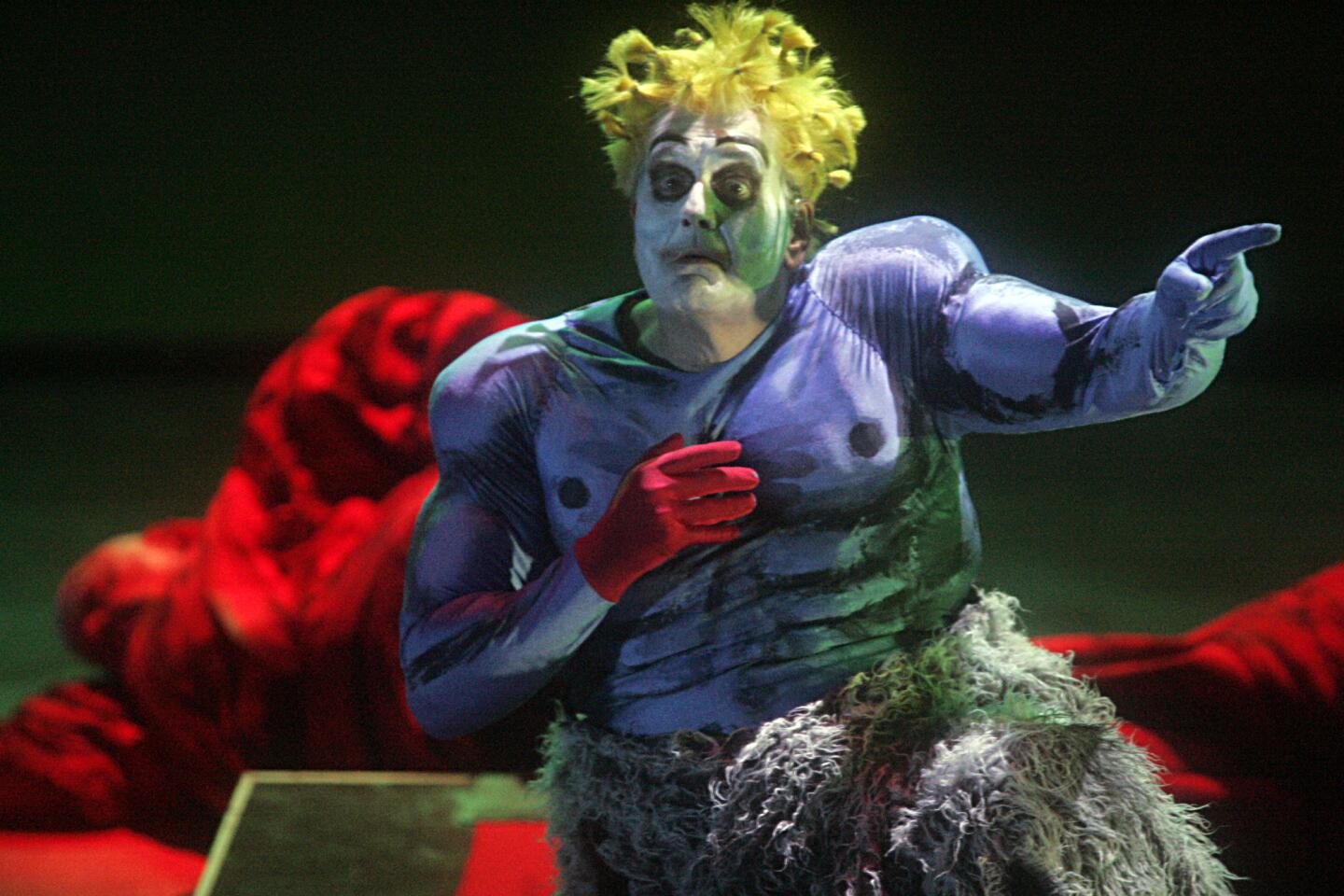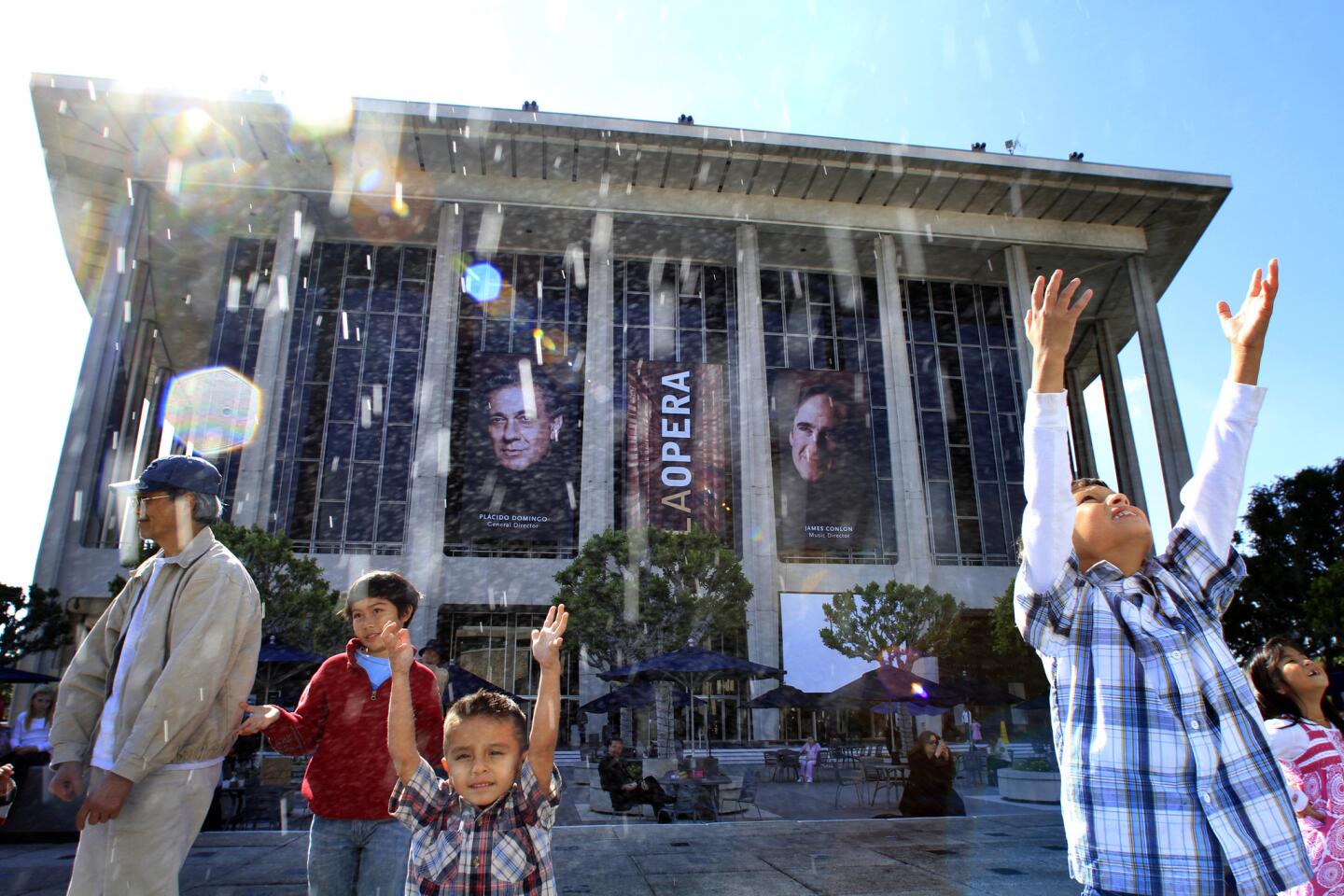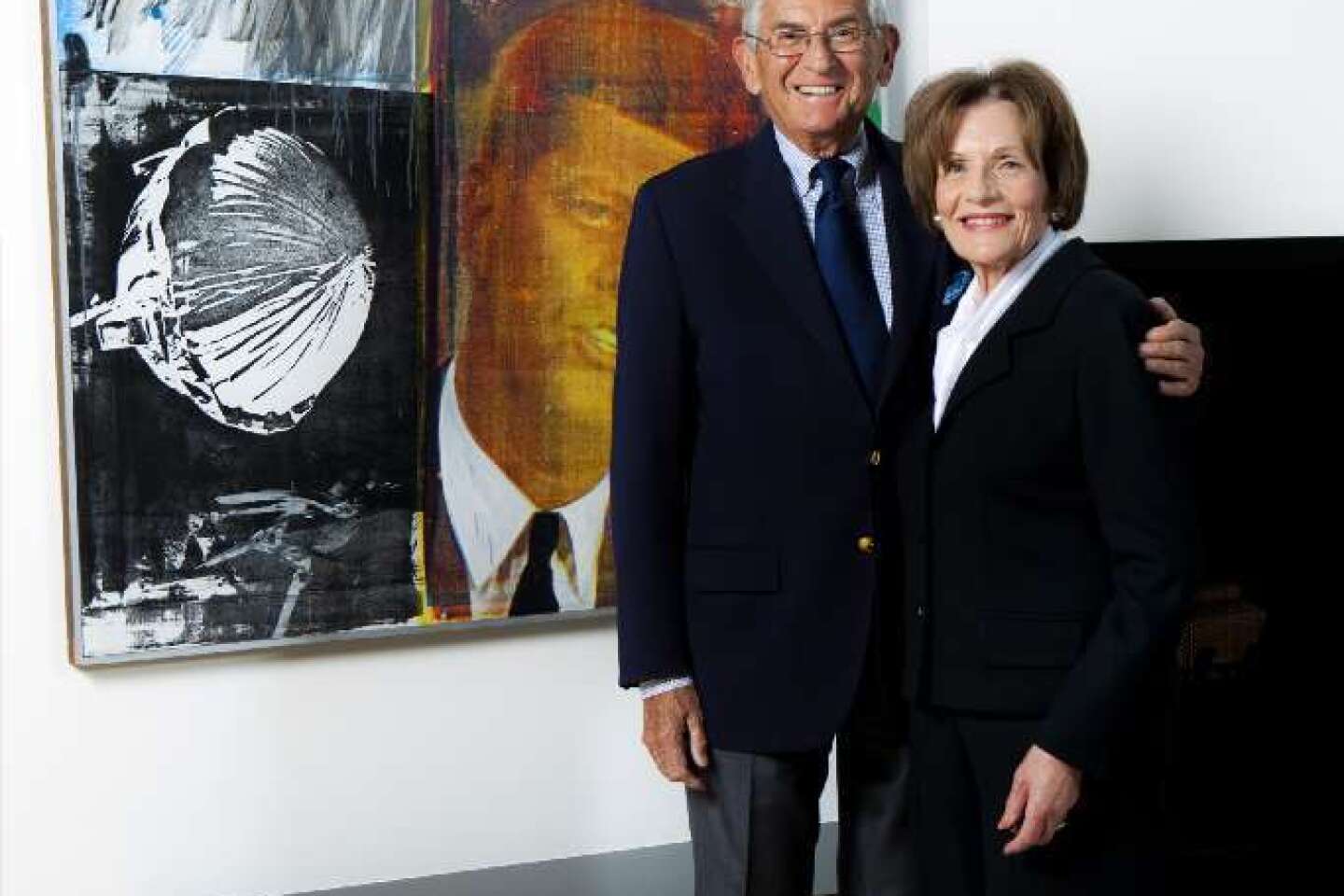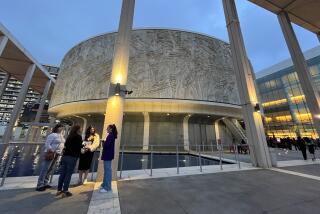Nederlands Dans Theater is moving in different directions
For more than two decades, the Nederlands Dans Theater’s international profile was defined by longtime artistic director Jiri Kylian.
Since Kylian stepped down, the company has begun to show the world the face it always presented at home in the Hague: that of a consistently creative troupe with a repertory showcasing a variety of choreographers, many of them current or former company members.
All three works on Nederlands Dans’ program at the Music Center from Oct. 18-20 fit that description. Two are by the team of resident choreographers Paul Lightfoot and Sol León. The third, “Chamber,” was initiated the last time the company performed in Los Angeles, when company member Medhi Walerski, an emerging choreographer, was introduced to British composer Joby Talbot.
It turned out to be a good match.
CRITICS’ PICKS: What to watch, where to go, what to eat
“We met after the show, just to have a first impression — how it would feel to work together. We clicked right away,” Walerski recalled recently, speaking by phone from The Hague.
Their collaboration, which the Music Center co-commissioned, draws on “The Rite of Spring” as a source of ideas, but it is very much a work of the 21st century.
Walerski, a 34-year-old Frenchman who joined the company in 2003, has worked for four different artistic directors during that decade.
Lightfoot is now the man in charge, having been named artistic director in September 2011.
CHEAT SHEET: Fall arts preview
He and León — both longtime Nederlands Dans Theater dancers who became a choreographic team — have created four dozen works for the repertory, two of which — “Shoot the Moon” and “Same Difference” — complete the Music Center program.
Lightfoot, who is British, and León, from Spain, joined Nederlands Dans in the late 1980s, at the height of Kylian’s popularity.
“If we went abroad, it was very much about Jiri’s work, because that was basically what was required of the company to be showing. Back home — Jiri realized that for the company’s artists, it was important to have many voices,” Lightfoot said, also by phone from The Hague, in a joint interview with León. “In Holland we worked with many choreographers — all kinds, from inexperienced to established names.”
Lightfoot said, “Last year, we had 11 world premieres. Therefore the kind of artist who’s attracted to the company has to have that creative flair within themselves. The chemistry is really important within the group — and the energy that these people produce. I think that’s one factor why so many creators emerged: because it is a company about creativity.”
PHOTOS: Best in theater for 2012
Kylian oversaw the duo’s earliest choreographic efforts. “He left the territory for us to do it. And slowly, it happened that we were part of the repertoire,” León said. Their dances are marked by the supple fluidity and intimate partnering that were Kylian trademarks, but range widely in theme and tone.
“Shoot the Moon” (2006) and “Same Difference” are set to scores by Philip Glass — to whose music Lightfoot and León have turned for inspiration more than 10 times. Lightfoot dismisses the categorization of Glass as a repetitive minimalist. “I think there’s always constant subtle development. The repetition is like a diversion; he’s hiding the real truth from us. He’s an extremely melodic composer.”
In “Shoot the Moon,” set to the second movement of Glass’ Tirol Concerto for Piano and Orchestra, five dancers inhabit a world of uneasy melancholy as they perform solos and duets in three wallpapered “rooms” on a rotating set. Solitude, yearning and an inability to connect fully are evoked as walls and windows provide barriers and escapes.
PHOTOS: LA Opera through the years
For “Same Difference,” set to selections from Glass’ Symphony No. 3 and String Quartet No 5, León says they were “interested in creating chaotic sound, on top of the Glass music — and how we will totally destroy that chaos to become silent? My intention was to create this kind of noise and volume, and egos.” The dancers add vocalizations to movement that pushes towards extremes.
Walerski, who performs in both Lightfoot-León dances, has been facing the often conflicting demands of performing and choreographing as his focus on the latter has intensified.
“There’s something in me that’s telling me that maybe it’s time to dive into choreography only. I work the whole day as a dancer, and then I go home and I’m so excited — I have ideas about future pieces. But I still enjoy performing so much.”
For “Chamber,” after Talbot came to see the company in The Hague, the two exchanged ideas via Skype and frequent emails. Walerski admits that taking inspiration from “The Rite of Spring” was overwhelming at first.
“For me it’s one of the most amazing masterpieces of our time. So it was a scary place that I was afraid to enter.”
ART: Can you guess the high price?
He describes the intense, 30-minute work as “more like an echo of what ‘Rite of Spring’ meant to me. I didn’t want to copy, or enter it too much. I just wanted to see how my imagination would go with what I’ve known and what I’ve heard, and what I’ve watched about ‘Sacre.’
“My initial idea was that I wanted the dancers to get into a state of physicality that would push them to their physical limits, and then to see what was left after that,” Walerski said. “But somehow the more we developed the piece, this idea developed into something else. In the end, there’s not a chosen one; it’s a couple. There are different couples that emerge from the group.
“I had worked from a really raw physicality before, and now I wanted to come back more to sensitivity, the idea of repetition.... The only thing I wanted to stay attached to was the idea of a ritual.”
More to Read
The biggest entertainment stories
Get our big stories about Hollywood, film, television, music, arts, culture and more right in your inbox as soon as they publish.
You may occasionally receive promotional content from the Los Angeles Times.

